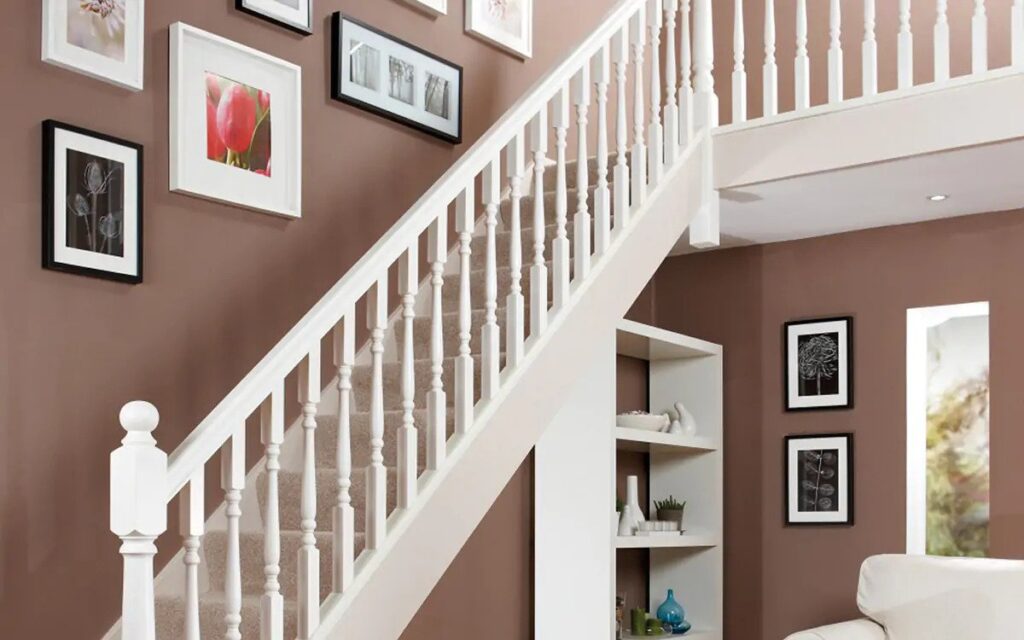Unlock the hidden potential of your staircase with expert stair refurbishment techniques that blend modern style with timeless elegance.
Understanding Your Stair Refurbishment Project
A well-executed stair refurbishment can dramatically transform your home’s aesthetic appeal while increasing its value. Recent studies show that homeowners can expect a 70-80% return on investment from quality stair renovations. Before embarking on this transformative journey, it’s essential to understand the scope of work and potential challenges. Your staircase is a complex structure that requires careful consideration of both aesthetic and structural elements. Modern refurbishment techniques have evolved significantly, with 45% of homeowners now opting for mixed material designs that combine traditional wood with contemporary elements like glass and metal.
Initial Assessment and Planning
- Inspect structural integrity of existing stairs, including support beams and fixings
- Document all measurements, including tread depth, riser height, and overall width
- Photograph current condition and identify specific areas requiring attention
- Check local building regulations – particularly important as UK standards require minimum tread depth of 220mm
- Assess whether existing materials can be refurbished or need replacement
- Consider lighting requirements and electrical modifications
Budget Considerations and Timeline Planning
When planning your stair refurbishment budget, consider that the average UK stair renovation costs between £2,000 and £5,000, depending on materials and complexity. Create a detailed timeline that accounts for material delivery, demolition, installation, and finishing. Most professional stair refurbishments take 3-5 days, but complex projects may require up to two weeks. Factor in additional time for custom materials, which typically have 2-3 week lead times.
Preparation and Demolition Phase
Proper preparation is crucial for achieving professional results. This phase requires careful attention to detail and the right tools to ensure a smooth transition to the renovation stage. Statistics show that poor preparation accounts for 60% of all renovation setbacks, making this step vital for project success.
Removing Old Materials Safely
- Clear workspace and protect surrounding areas with dust sheets
- Remove carpet strips and padding, working from top to bottom
- Extract old adhesives and tacks using appropriate solvents
- Remove existing nosing and trim pieces carefully to avoid damage to treads
- Assess substructure condition once exposed
Surface Preparation
Professional surface preparation involves thorough cleaning and levelling of all surfaces. Use industrial-grade sanders for wooden surfaces and ensure proper ventilation. For concrete stairs, repair any cracks with appropriate fillers and allow adequate drying time. Apply joint compound in thin layers, allowing each to dry completely before sanding.
Upgrading Stair Components
The transformation phase is where your vision comes to life. Modern stair components offer unprecedented design flexibility, with 78% of UK homeowners now choosing customised solutions over standard options. Consider both aesthetic appeal and practical durability when selecting materials.
Treads and Risers
- Solid oak treads (most popular choice, offering durability and timeless appeal)
- Engineered wood options (ideal for high-traffic areas)
- Luxury Vinyl Planks (water-resistant and cost-effective)
- Natural stone (for dramatic visual impact)
- Anti-slip strips or treatments for enhanced safety
Balustrade Modernization
Contemporary balustrade options have expanded significantly, with glass panels now accounting for 35% of new installations in modern UK homes. Metal spindles in various finishes offer excellent durability, while wooden options provide traditional elegance. Consider mixing materials for a unique, contemporary look.
Finishing Touches and Professional Details
The finishing stage requires meticulous attention to detail to achieve a professional result. This phase typically accounts for 30% of the total project time but makes the crucial difference between an average and exceptional renovation.
Surface Finishing
- Apply primer suited to your chosen material
- Use high-quality wood sealers for natural finishes
- Consider multiple coats of clear protection for high-traffic areas
- Allow adequate drying time between coats
- Add non-slip treatments to tread surfaces
Surrounding Areas
Complete the transformation by addressing adjacent walls and fixtures. Repair any plasterwork damage, relocate light switches if necessary, and ensure seamless integration with existing décor. Consider adding accent lighting for enhanced safety and aesthetic appeal.
Maintaining Your Refurbished Staircase
Proper maintenance can extend the life of your refurbished staircase by up to 15 years. Regular care prevents wear and maintains safety standards, protecting your investment for the long term.
Regular Care Tips
- Weekly cleaning with material-appropriate products
- Immediate attention to spills or damage
- Quarterly inspection of all fixings and joints
- Seasonal deep cleaning and maintenance
Long-term Protection
Implement a comprehensive maintenance schedule to protect your investment. Consider professional inspection every 2-3 years, particularly for structural elements. Apply fresh protective coatings as recommended by manufacturers, typically every 3-5 years for high-traffic areas.
Transform your home’s central feature into a stunning architectural element that combines beauty with functionality. Contact Kent Plasterers today for expert stair refurbishment services that will elevate your home’s aesthetic appeal while ensuring safety and durability for years to come.
FAQ
How do you renovate an existing staircase?
The simplest and most cost-effective way to perform a DIY stair remodel is to sand each step and reapply a wood or varnish finish. As a staircase has many corners and hard-to-reach areas, you will need the appropriate equipment. For smooth surfaces and edges, an orbital sander is your best option.
How long does a staircase remodel take?
How Long Does A Typical Stair Renovation Take? The length of time for a staircase renovation depends on the complexity of the project with our top priority being safety. We have seen averages of 2 days to 2 weeks depending on the extent of the staircase renovation.
Sources
[1] https://angelarosehome.com/modern-staircase-renovation-tutorial/
[2] https://www.instructables.com/Stair-Remodel-DIY-Renovation/
[3] https://www.shawstairs.com/product-category/stair-refurbishment-kits/

